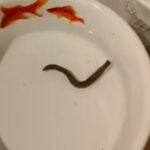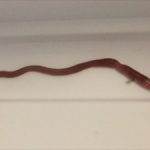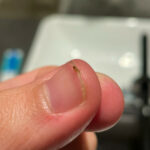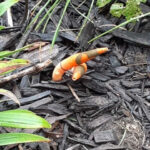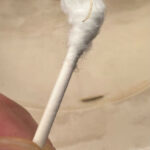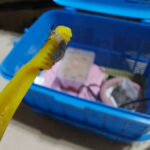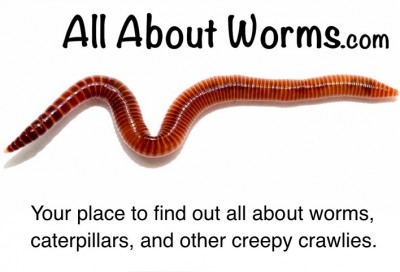The broad tapeworm is a human parasite, but it has two intermediate hosts – the water flea and a significant number of freshwater fish. The broad tapeworm (Diphyllobothrium latum) can live in a human’s intestines for 20-25 years and it can grow up to 15 feet long or more. Tapeworms can enter the body through uncooked, infected fish. If a human consumes an infected, uncooked piece of fish, larvae are released into the body. Using small hooks, the worms attach themselves to the wall of the gut and develop into adult worms in three weeks. It is important to note that consuming raw fish such as sushi can out you at risk of consuming tapeworm larvae.
The broad tapeworm or just “tapeworm,” can cause moderate to severe symptoms if left untreated. Symptoms include:
Loss of appetite
Abdominal discomfort
Rashes
Insomnia
Eye pain
Protein deficiency
Gas
Constipation
Mental dullness
Fever
Coughing
Nervousness
Vomiting
Nausea
Anemia
Stomach bloating
Bloody stools
Weakness
Chills
Diarrhea
Fatigue
Colon blockage
Vitamin B12 deficiency
If you have any of the symptoms listed above, the first step is to see a doctor. A doctor will perform one or several tests such as a fecal flotation test, blood tests to screen for antibodies, CT or MRI scan, ultrasound, or X-rays. Once the condition has been diagnosed, antibiotics will be prescribed for treatment. Some of the most common antibiotics for the broad tapeworm include Albendazole (Albenza) or nitazoxanide (Alinia). These medications kill adult tapeworms, but not the eggs. It is important to take preventative steps to avoid re-infection. If the condition is advanced, your doctor may prescribe drugs such as anti-inflammatories or even suggest surgery if the condition is causing seizures, inflammation in the tissues, fluid on the brain, or cysts, which can threaten organ function.
To prevent re-infection, you should avoid eating undercooked fish and meats and avoid swimming in lakes and streams. You should always wash your hands thoroughly after using the bathroom whether it is in your home or in a public place. In addition, wash kitchen utensils and countertops with hot soapy water after each use and wear gloves when changing your cats litter box or cleaning up after your pets.
Many naturopaths believe that certain foods can encourage the development of tapeworm larvae. They suggest avoiding:
Chestnuts
Sugar
Watercress
Refined carbohydrates
Swimming in lakes, rivers, an streams
Using the microwave to cook meats
Naturopaths also believe that parasites can be eliminated from the body with colon cleansers or colonics or by using a number of different herbal or natural remedies. These include:
Black walnut leaves, wormwood, quassia, cloves, male fern
Capsicum, wormwood, sage
Cramp bark, pumpkin seed, capsicum, thyme, garlic
Black walnut, pine needles, sassafras
In general, herbal remedies should be taken orally for a minimum of two weeks. Certain foods, spices, and beverages are believed to have the ability to ward off parasite infections or they will keep you from becoming infected through food or water sources. These include:
Cranberry juice
High-fiber foods
Pumpkin seeds
Garlic
Pomegranates
Apple cider vinegar
Figs
Bottled or distilled water
Thoroughly cooked meats and seafood
Organic fruits and vegetables, washed thoroughly
As stated earlier, you should always talk to a doctor first for diagnosis and recommendations on the best treatment path.
All About Worms is always free, always reader-supported. Your tips via CashApp, Venmo, or Paypal are appreciated! Receipts will come from ISIPP Publishing.



